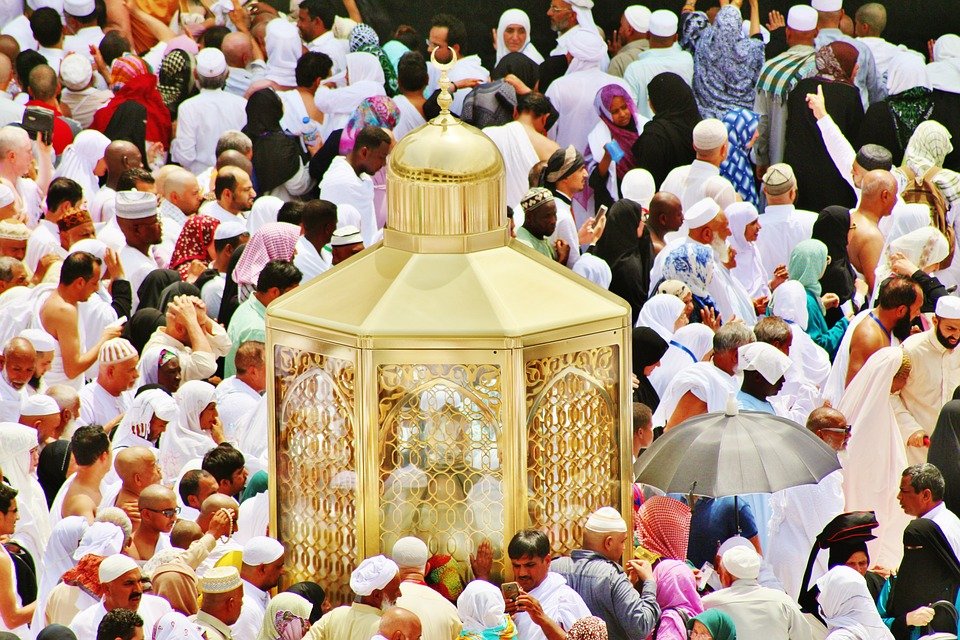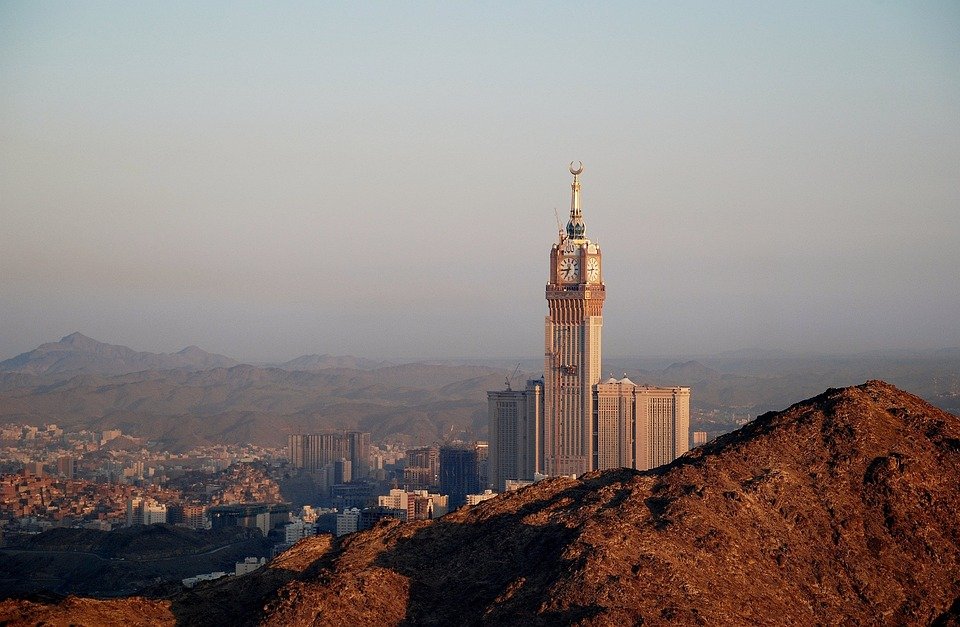You are here to read: How is Hajj Celebrated: Rituals and Significance Explained – A Thoughtfully Written Guide Offering Spiritual Wisdom and Travel Advice for Every Pilgrim who is going on holy journey of Hajj or Umrah.
Hajj is a significant pilgrimage in Islam, celebrated annually by millions of Muslims around the world. In this article, I intend to guide you through how Hajj is celebrated, offering a comprehensive overview of its rituals and practices. You will find valuable insights into the various stages of this sacred event, from the initial preparations to the ceremonies held in Makkah and surrounding areas. I believe that by understanding how Hajj is celebrated, you will appreciate its spiritual depth and the profound connection it fosters among participants.
The significance of how Hajj is celebrated cannot be overstated. This pilgrimage represents a unique opportunity for Muslims to seek forgiveness, promote unity, and strengthen their faith. As we share our insights on “How is Hajj Celebrated: Rituals and Significance Explained,” you can trust us at Airlinkhajjandumrah.com. With over nine years of experience in the Umrah and Makkah, Madinah travel field, we feel equipped to provide you with accurate information and guidance. Together, let’s explore the importance of this revered practice and celebrate its profound meaning in the lives of those who partake in it.
How is Hajj Celebrated: Rituals and Significance Explained
Introduction to Hajj
Hajj is one of the most amazing and important events for Muslims around the world. Every year, millions of people travel to Makkah, Saudi Arabia, to take part in this sacred pilgrimage. This journey holds a special place in the hearts of many. Not only is it a chance to connect spiritually, but it also fosters a strong bond among the Muslim community.
The act of going on Hajj is a symbol of unity and devotion. It’s a time for reflection, prayer, and a deepened faith. All Muslims who are physically and financially able must perform Hajj at least once in their lifetime. This obligation unites millions of people from various backgrounds and cultures, illustrating the strong ties that faith can bind.
The Preparations for Hajj
Before embarking on Hajj, pilgrims prepare in numerous ways. Many spend months organizing their travel plans, seeking blessings, and learning about the rituals they will perform. It’s not just about packing clothes; it’s a time of spiritual preparation. Pilgrims often reflect on their lives, seeking forgiveness for past mistakes.
As the time approaches, one can feel the excitement and anticipation build. Some choose to read about the life of Prophet Muhammad (peace be upon him) to better understand the significance of their journey. This preparation game enhances their spiritual experience. They also make sure to gather the necessary travel documents, ensuring that everything is in order for their trip.
The First Steps: Entering Makkah
Upon reaching Makkah, the first thing that strikes many is the grand sight of the Kaaba. This cube-shaped structure sits in the center of the Grand Mosque and represents the spiritual heart of Islam. Pilgrims often feel a rush of emotions upon their first glimpse of it. Many believe it symbolizes the presence of Allah, drawing them closer to their faith.
You're at the middle of this awesome post at AirlinkHajjandUmrah.com through: How is Hajj Celebrated: Rituals and Significance Explained. Keep reading, it gets better!
Once in Makkah, pilgrims enter a state known as Ihram. This involves wearing simple, white garments that promote equality among all participants. Whether rich or poor, everyone appears the same, which is an essential aspect of the pilgrimage. This notion of equality fosters a sense of community, reminding us that in the eyes of Allah, we are all equal.
The Sacred Rituals of Hajj
The Hajj consists of several important rituals that pilgrims perform over a few days. One key ritual is the Tawaf, where pilgrims circle the Kaaba seven times in a counterclockwise direction. Each circle symbolizes different aspects of devotion and respect. The energy of the crowd, moving together in unison, creates an atmosphere of unity and love.
Another key component is the Sa’i, which involves walking between the hills of Safa and Marwah. This act commemorates Hagar’s search for water for her son, Ishmael. Pilgrims often feel a deep connection to this story, emphasizing the importance of trust and patience in faith. Each step taken becomes a beautiful reminder of the sacrifices made by those who came before us.
The Day of Arafah
The Day of Arafah is considered the pinnacle of Hajj. Pilgrims gather at the plain of Arafat, spending the day in prayer and reflection. Many believe that Allah forgives sins on this day, offering a fresh start to those who seek it. The atmosphere is full of sincerity and hope, making it a deeply emotional experience for most.
Standing in prayer and supplication, pilgrims express their wishes and gratitude. This act of reflection helps solidify personal connections to faith. Being surrounded by so many others, all striving for the same goal, enhances the sense of community and shared purpose. It’s a time when many feel truly connected to something larger than themselves.
The Festival of Eid al-Adha
After completing the Hajj rituals, pilgrims participate in the celebration of Eid al-Adha. This festival of sacrifice holds great significance. It commemorates the willingness of Ibrahim (Abraham) to sacrifice his son as an act of obedience to Allah. To honor this story, many families around the world choose to sacrifice an animal, sharing its meat with those in need.
As the days go on, the festival also serves as a reminder of the values of compassion and generosity. It emphasizes the importance of caring for others, a core principle in Islamic teachings. Pilgrims often take part in communal meals, reinforcing the bond created during the pilgrimage. It’s a joyous time filled with gratitude, reflection, and shared blessings.
Reflections on the Importance of Hajj
Hajj is more than just a series of rituals; it holds deep significance for millions. Many come away with a renewed sense of purpose, clarity, and connection to their faith. The experience transforms lives, encouraging unity, compassion, and understanding. Each act carried out during Hajj is a reminder of the importance of community and faith in our lives.
In my opinion, the journey influences not only the pilgrims but also their families and friends back home. Stories of their experiences often inspire others to reflect on their own lives and faith. Hajj encourages individuals to cultivate good deeds and stay true to their beliefs. For many, it becomes a transformative chapter in their lives, leading them towards a path of peace and spirituality.
Conclusion: A Lifelong Journey
In conclusion, Hajj is a remarkable celebration of faith and unity. It embodies the principles of devotion, equality, and community. As pilgrims undertake this journey, they engage in profound rituals, all while reflecting on their lives and building connections with others.
The stories and lessons learned during Hajj have the power to resonate long after the journey ends. They remind us of the importance of kindness and compassion, virtues we can carry forward in our daily lives. Ultimately, Hajj symbolizes a lifelong journey towards understanding, growth, and a deeper connection to our spirits and communities.
That wraps up How is Hajj Celebrated: Rituals and Significance Explained. Thanks for sticking with us till here! Share this: How is Hajj Celebrated: Rituals and Significance Explained with your friends.
Check our homepage at Air Link Hajj & Umrah for more awesome updates.
Some interesting posts are: 1: Umrah Mubarak, 2: When is Umrah closed 2026?, 3: When does Umrah start after Hajj 2026?
Mushu, an experienced Saudi Arabia traveler and writer, shares insightful tips and spiritual reflections to enhance Hajj and Umrah journeys for fellow pilgrims. He has been to Makkah and Madina from 2016 to 2023 many times and his posts will reflect this.







